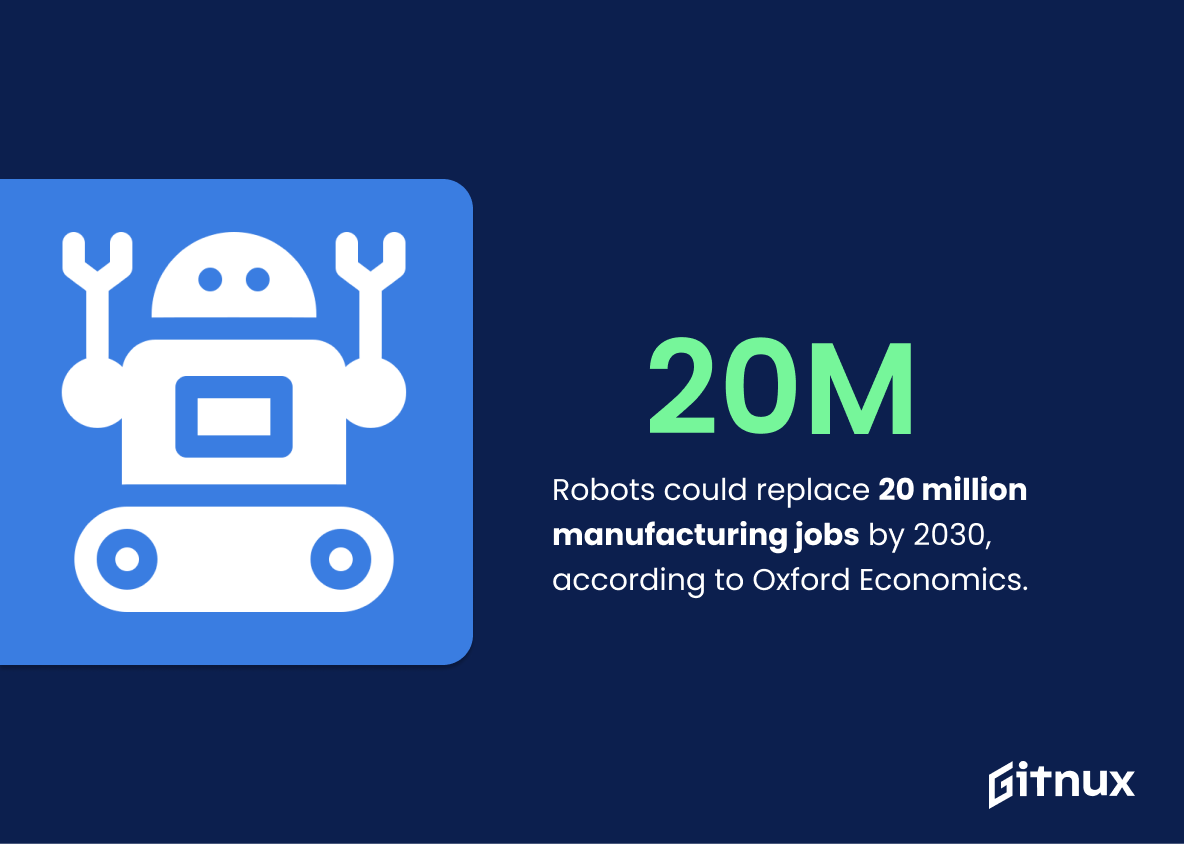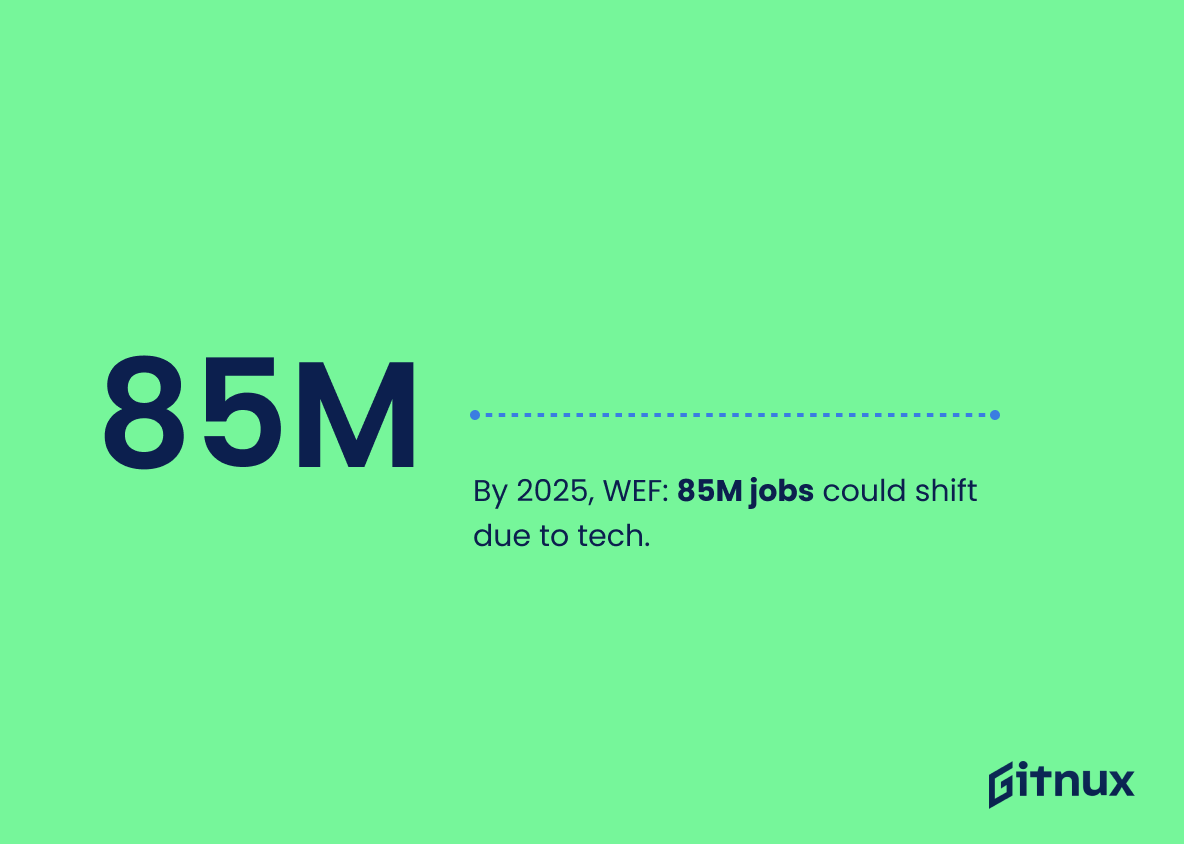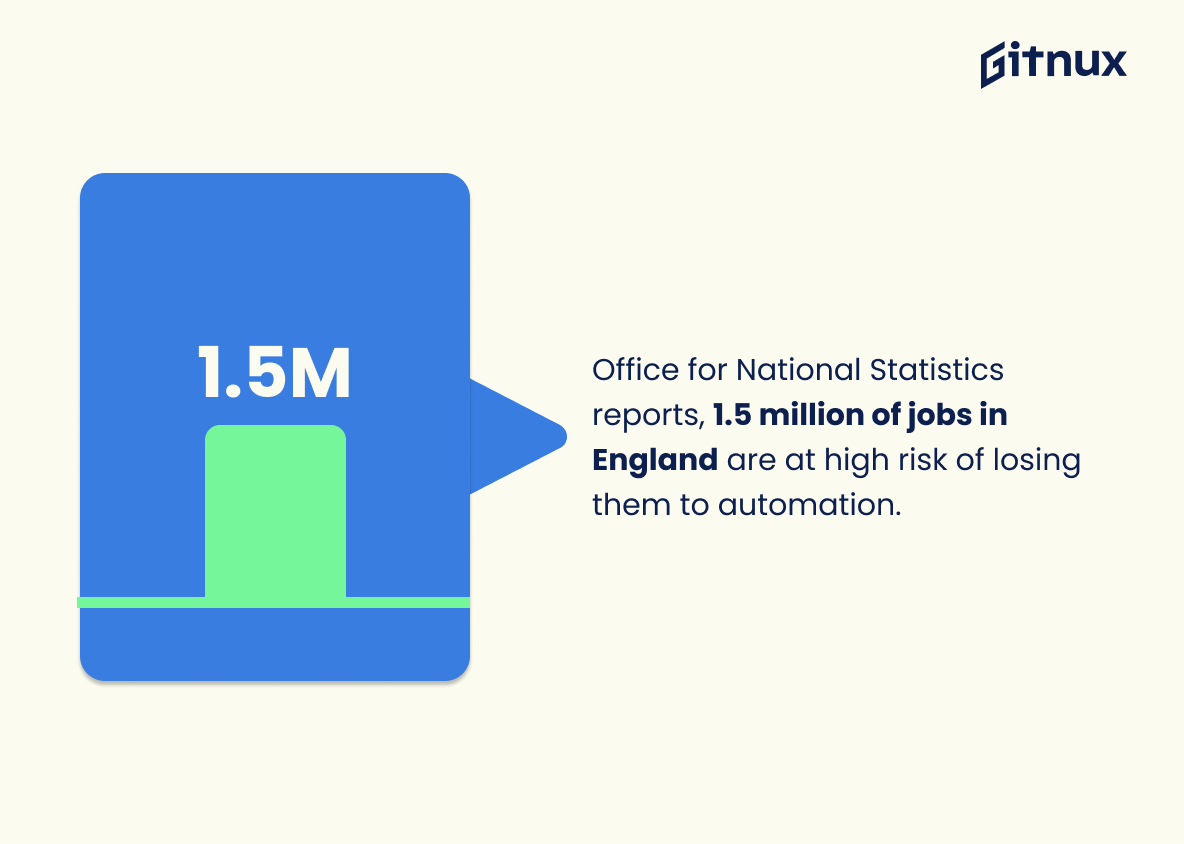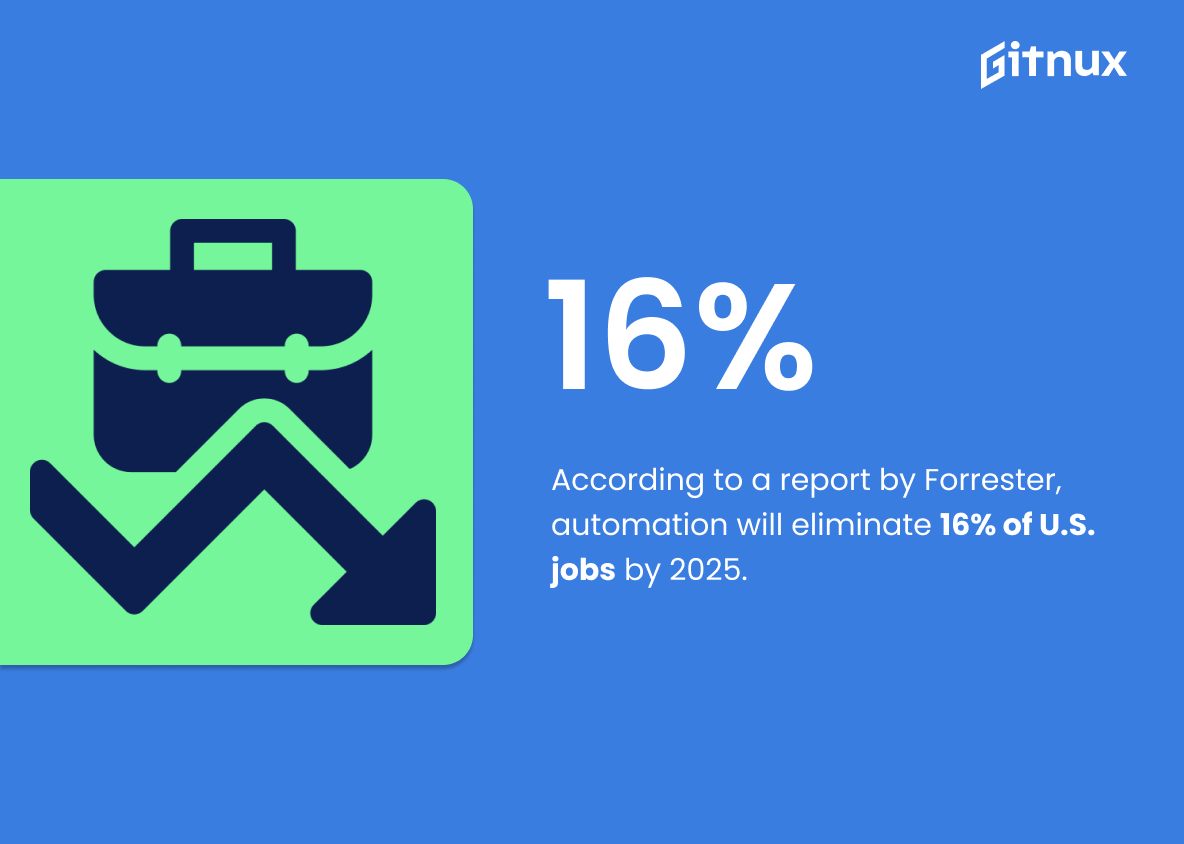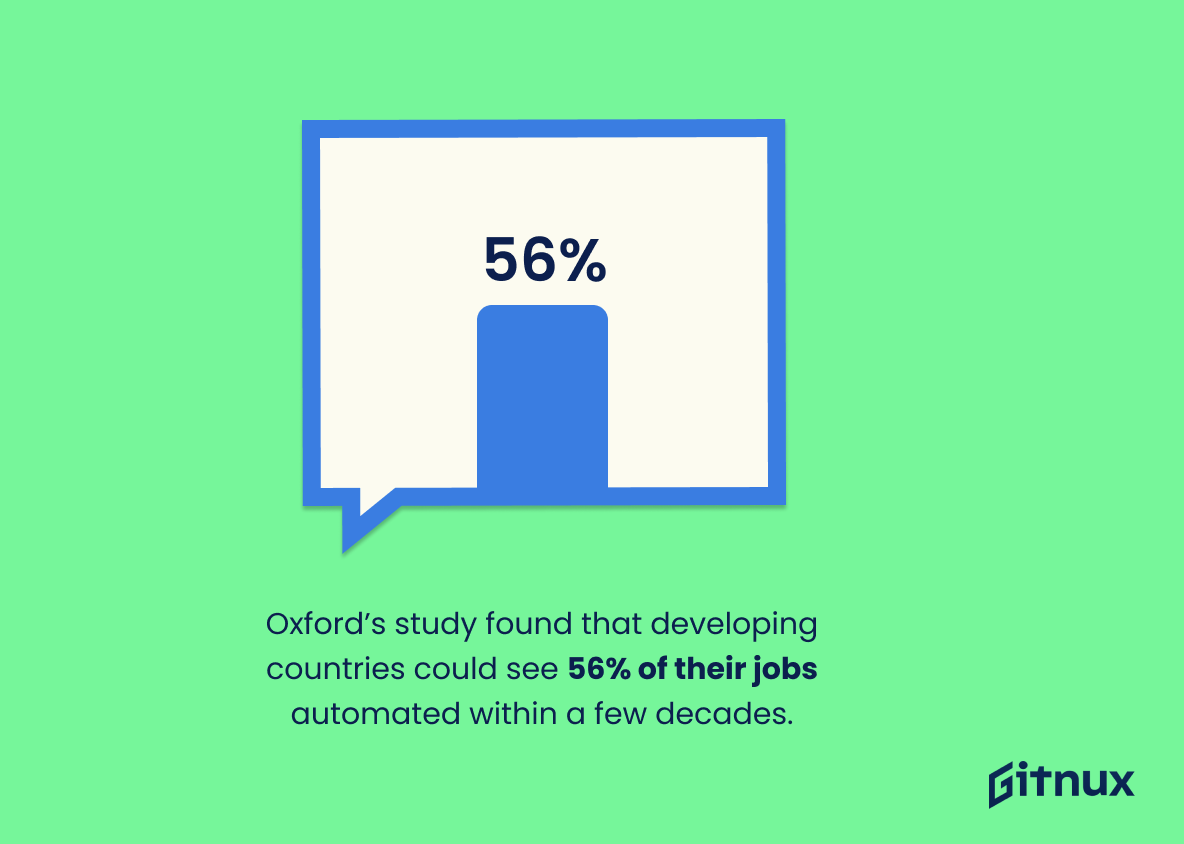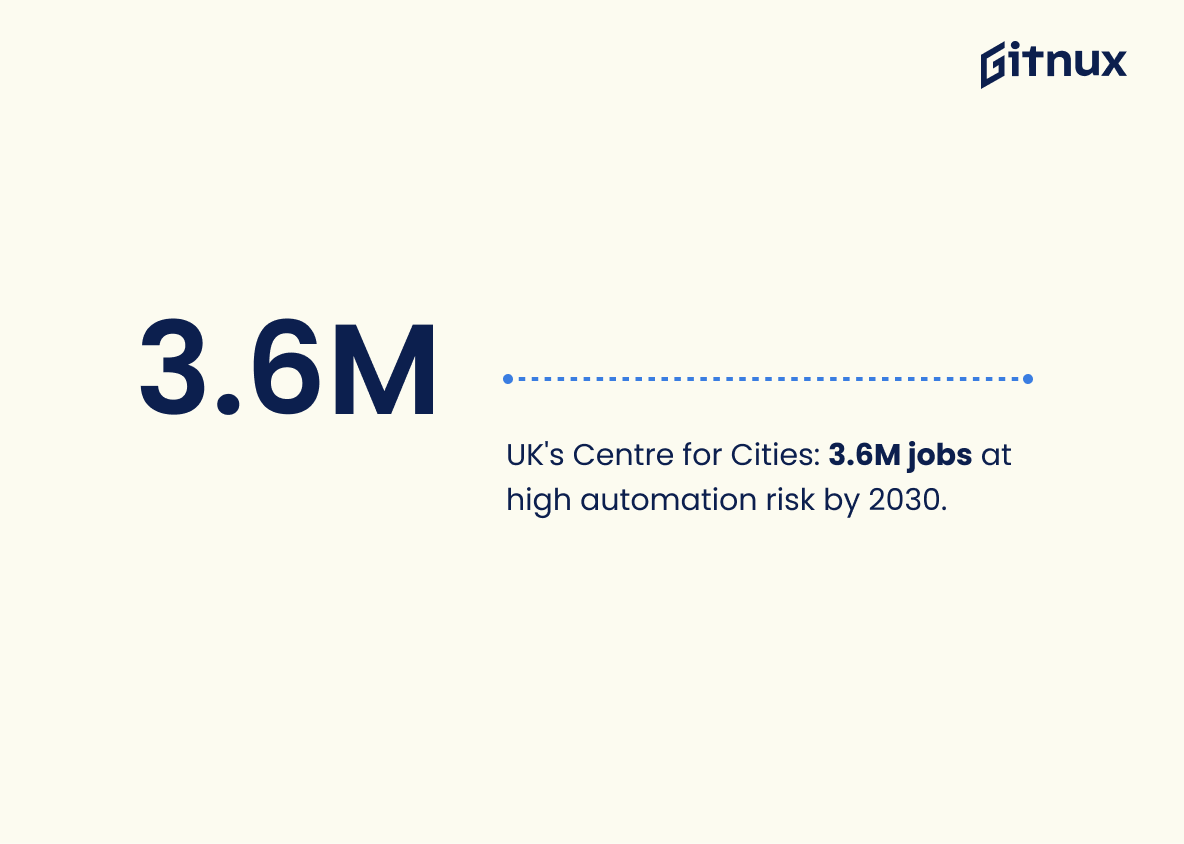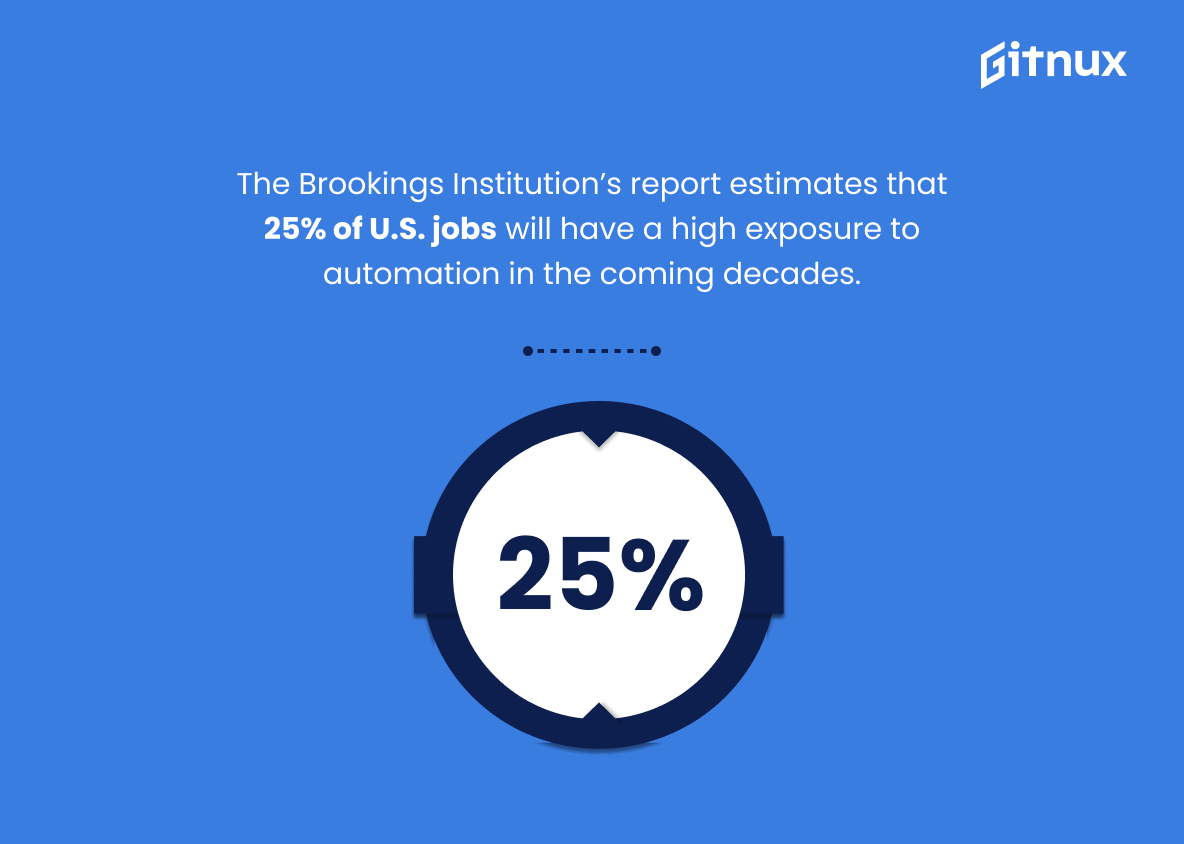As we journey through the dynamic evolution of technology, the shadow of automation doesn’t seem to recede. Rather, it continues to cast its lasting impact not only on the industrial sector but on the job market as a whole. This blog post delves into the stark realities painted by ‘Jobs Lost to Automation Statistics.’ While automation offers the promise of increased efficiency and productivity, it also predicates the growing vulnerability of certain jobs.
Join us as we navigate through the intricate labyrinth of numbers and percentages, shedding light on the metamorphosis of the job landscape in the face of relentless technological advancements. From traditional roles to contemporary professions, no job appears to be completely immune to this phenomena. Let’s delve deeper into the statistics of jobs lost to automation and decipher the future of work in the digital age.
The Latest Jobs Lost To Automation Statistics Unveiled
Robots could replace 20 million manufacturing jobs by 2030, according to Oxford Economics.
Voyaging into the realm of the future work landscape, it becomes crystal clear that ‘Robots replacing 20 million manufacturing jobs by 2030’ according to Oxford Economics, fulfills a central role. In the grand narrative of jobs succumbing to automation, this is much more than a mere number; it reflects the profound and momentous transformations sweeping across the global job market.
This ground-breaking shift is not just reshaping traditional manufacturing roles, but also drip-feeding change into nearly every part of the economy, triggering ripple effects that could alter the livelihoods of countless people. With such a staggering projection, this statistic paints a powerful panorama for both current and future generations, acting as the rudder to navigate the complexity of the employment landscape in the era of automation.
According to McKinsey, about half of all work activities globally have the technical potential to be automated by adapting currently demonstrated technology.
As we peer into the lens of the future employment landscape through the prism of this statistic provided by McKinsey, a compelling narrative takes shape – one that underscores the unrivaled potential of automation. Nearly half of all work activities across the globe possess the capacity to bow out of the human hands and transition into automated systems using technology available today.
An observation of such magnitude places the spotlight on the inevitability and urgency of workforce transformation wherein many jobs, as we know them today, risk extinction. Therefore, integrating this statistic into a blog post discussing the impact of automation on job statistics lends credence to the evolving dynamic between man and technology. The numeric revelation serves as a concrete roadmap to navigating the impending waves of changes in employment, thereby empowering readers with the knowledge to future-proof their careers.
World Economic Forum estimates that by 2025, 85 million jobs may be displaced by the shift in the division of labor between humans, machines, and algorithms.
Painting a vivid picture of the swiftly changing job landscape, the potent estimate from the World Economic Forum drives home the transformative impact of automation. By 2025, a staggering 85 million jobs potentially being displaced underscores the dramatic shift in labor division as humans, machines, and algorithms increasingly share the workforce.
In a blog post aimed at delving deep into job loss due to automation, this statistic serves as a numerical testament to the inevitable march of technology. It encapsulates the abruptness of this change, offering readers a clear view of the vast scope of occupational transitions we’re headed towards. Every alteration on the automated chessboard could reshuffle livelihoods, making this statistic a thought-provoking addition to understanding job displacement in the wake of automation.
Office for National Statistics reports, 1.5 million of jobs in England are at high risk of losing them to automation.
In the panorama of the rapidly evolving job market, the Office for National Statistics’ report revealing a whopping 1.5 million jobs in England in the crosshairs of automation paints a picture both fascinating and alarming. This figure—casting a lightning bolt into every conversation about future employment—is a vanguard for change, the echo of the footsteps of a not-so-distant future.
Highlighted in a blog post about Jobs Lost to Automation, it not only speculates the magnitude of the shift but also rallies the audience by shedding light on the scale of the impact that automation can have on the lives of many people. It reiterates the relevance of preparing today for tomorrow’s tech-heavy world, emphasizing the call to action for skills upgrade and adaptation in the age of robots and artificial intelligence.
A study from PricewaterhouseCoopers found that up to 30% of UK jobs could be at high risk of automation by the early 2030.
Reflecting upon the fascinating investigation conducted by PricewaterhouseCoopers, we see a looming reality: automation could place as many as 30% of UK jobs into high-risk territory by the early 2030s. This statistic becomes a formidable backdrop to our narrative on Jobs Lost to Automation Statistics by casting a spotlight on the future of job security.
It becomes particularly significant when we comprehend that this isn’t a far-fetched trope from a futuristic novel, but a credible, predicted shift within the next decade. It certainly sets the stakes, underscoring the urgency for adaptation, reskilling, and policy changes.
This emblematic 30% serves as a bellwether, signaling the extent of the automation revolution, its possible impact on the UK’s employment landscape and the resultant socio-economic ripple effects. It compels readers to not just absorb this information passively, but to interrogate the future of their chosen professions, the skills they need to develop, and how best to position themselves in an ever-evolving job market.
According to a report by Forrester, automation will eliminate 16% of U.S. jobs by 2025.
The potency of this statistic, forecasting a significant 16% reduction in U.S. jobs due to automation by 2025, sharply underscores the profound impact automation might exert on our economy and labor market. In the realm of ‘Jobs Lost To Automation Statistics’, it serves as a stark harbinger of the escalating seismic shifts we can anticipate.
With job displacement rising like a specter over the workforce, it paints a not-so-distant future where the rules of employment will be drastically rewritten, transforming the landscape of work as we know it. It unearths a pressing issue that necessitates proactive steps to remedy its effects – readjusting job roles, retraining employees, and reshaping economic policies. This piece of data serves as a key parameter for measuring the urgency and the extent of the impending transition to an increasingly automated world.
Oxford’s study found that developing countries could see 56% of their jobs automated within a few decades.
Unearthing such an alarming statistic from a reputed institution like Oxford – predicting a whopping 56% of jobs in developing countries facing automation in the coming decades – serves as a critical red flag. It imparts an urgent message in our discourse about ‘Jobs Lost To Automation Statistics’. It not only accentuates the skyrocketing advancements in robotics and artificial intelligence but also underscores potential socioeconomic repercussions.
This particularly resonates in developing nations where large swathes of the population rely on potentially automatable jobs for their livelihoods, making it a topic of immediate attention for policymakers, educators, and society as a whole. This pronouncement, hence, stands as a beacon – highlighting the need for timely intervention, skill evolution and proactive mitigation strategies to navigate through the rapidly changing world of work.
A research by Centre for Cities in the UK revealed that around 3.6 million jobs in the country are high risk of being lost to automation by 2030.
Painting a vivid picture of the employment landscape, this captivating statistic from the Centre for Cities brings to light an unsettling yet potentially transformative employment trend in the UK. With 3.6 million jobs standing at the precipice of automation by 2030, the future of work pivots on a delicate intersection of technology and human adaptability. Amidst this backdrop, this statistic forms the critical cornerstone in an engaging blog post on automation-induced job losses.
Serving as an eye-opening forecast, it compels readers to simultaneously contemplate the risks and opportunities inherent in an automated future. It represents a loud wake-up call for policymakers, educators, and workers alike to reevaluate job preparedness strategies and seek innovative ways to future-proof their careers. Thus, in the grand narrative of automation, this statistic does not merely function as a grim prophecy; it also furnishes the sobering reality against which future developments will be tracked and measured.
Everest Group reports that Robotic Process Automation (RPA) can lead to a decrease of 43% in resources required for transaction processing.
Picturing the landscape of employment, the above statistic paints a rather vivid picture. The Everest Group’s revelation, which highlights a 43% reduction in the necessity for resources amid transaction processing due to Robotic Process Automation (RPA), becomes a key player in the narrative of jobs lost to automation. Essentially, this gauge of potential resource reduction translates directly into labor dynamics, indicating a shifting role for human workers.
It blows a stark warning whistle for those in transaction processing roles and similar professions, alerting them to the growing influence of automation and its potency to strip down labor demands. Hence, within the framework of a blog post about jobs lost to automation, this statistic stands as a lighthouse, signaling potential rocky shores ahead for workers in certain sectors.
The Brookings Institution’s report estimates that 25% of U.S. jobs will have a high exposure to automation in the coming decades.
In the ever-evolving landscape of technology, the statistic from The Brookings Institution’s report lends significant weight to the discussion about job automation risks. Speaking to the immediacy of this issue, it predicts that a quarter of U.S. jobs might be highly exposed to automation in the future. This projection illuminates the magnitude of potential job displacement and serves as a clarion call for us to have a deeper understanding of these implications.
Ironically, it also compels the reader to humanize statistics. Behind the number 25% lies millions of people whose livelihoods may be rattled by the march of mechanization. Hence, this figure isn’t just an impersonal data point, but a foreshadowing of the challenges and changes that await the workforce.
Furthermore, nestled within this alarm is an opportunity – a catalyst for dialogue, innovation, and proactive action. It should inspire conversations about upskilling, reskilling, lifelong learning and stoking the adaptable spirit of the American workforce.
In essence, this statistic is not just predicting a future trend, it’s framing the narrative around automation, shaping policy dialogues, influencing personal career choices, and ultimately, redefining the ethos of the job market in the era of technological advancements.
Conclusion
In a rapidly evolving digital landscape, jobs lost to automation are becoming a significant economic concern. The statistics reveal a crucial wake-up call, emphasizing the need for industries and individuals to adapt to this shift.
While it may seem alarming, this technology-driven disruption also brings along new job opportunities in areas such as robotics, data analysis, AI, and more. As we move forward, continuous learning, skill development, and policy reforms will be paramount to mitigating job displacement and leveraging the benefits of automation technology. In essence, the future of work will depend on how effectively we manage this change today.
References
0. – https://www.www.brookings.edu
1. – https://www.www.mckinsey.com
2. – https://www.www.weforum.org
3. – https://www.www.centreforcities.org
4. – https://www.www.oxfordmartin.ox.ac.uk
5. – https://www.www.everestgrp.com
6. – https://www.www.pwc.co.uk
7. – https://www.go.forrester.com
8. – https://www.www.oxfordeconomics.com
9. – https://www.www.ons.gov.uk
